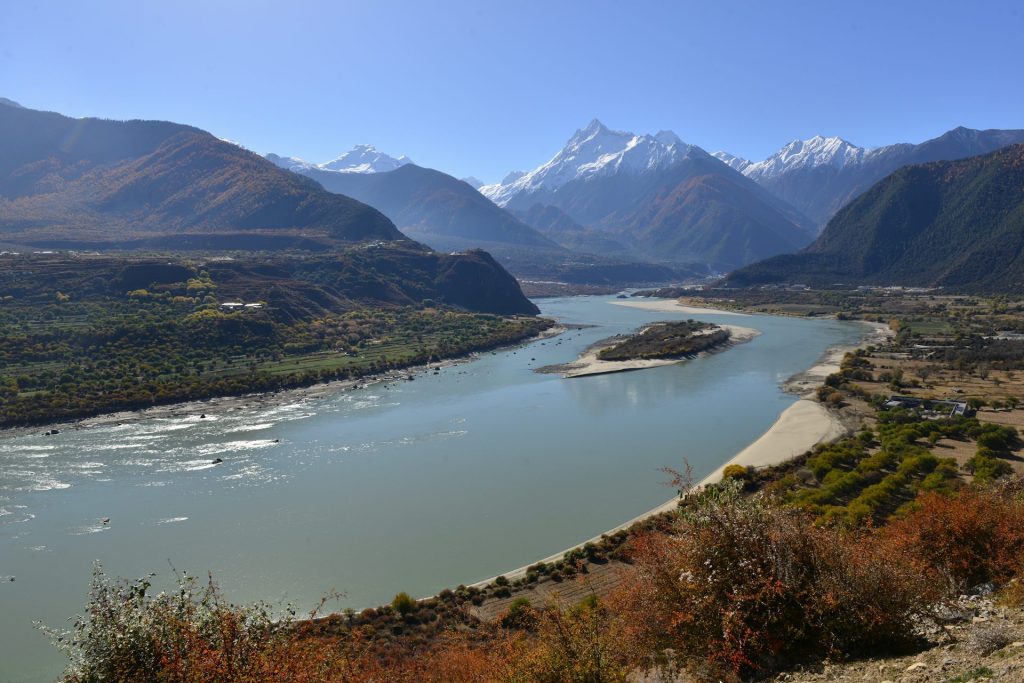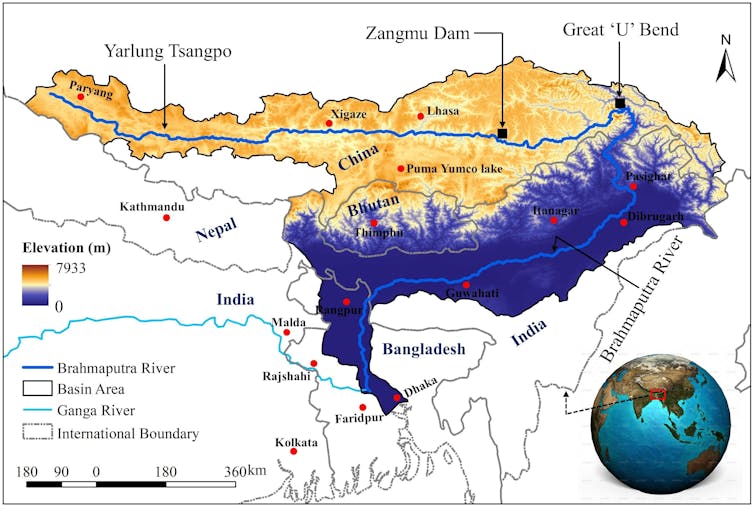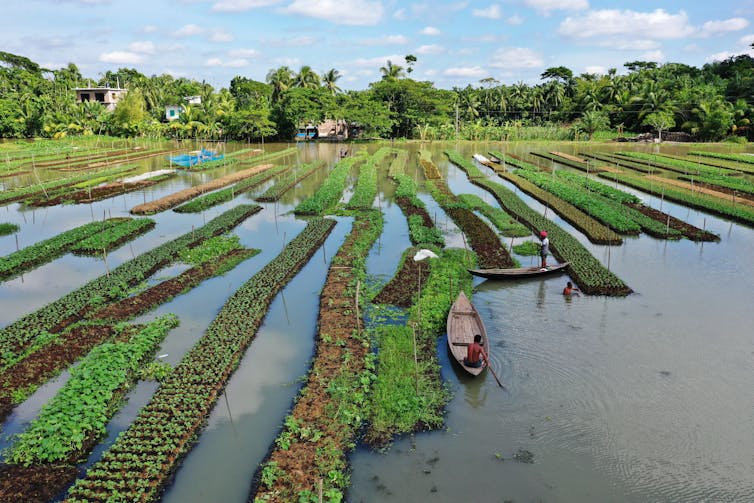China Plans to Build the World’s Largest Dam – But What Does This Mean for India and Bangladesh Downstream?

China recently approved the construction of the world’s largest hydropower dam, across the Yarlung Tsangpo river in Tibet. When fully up and running, it will be the world’s largest power plant – by some distance.
Yet many are worried the dam will displace local people and cause huge environmental disruption. This is particularly the case in the downstream nations of India and Bangladesh, where that same river is known as the Brahmaputra.
The proposed dam highlights some of the geopolitical issues raised by rivers that cross international borders. Who owns the river itself, and who has the right to use its water? Do countries have obligations not to pollute shared rivers, or to keep their shipping lanes open? And when a drop of rain falls on a mountain, do farmers in a different country thousands of miles downstream have a claim to use it? Ultimately, we still don’t know enough about these questions of river rights and ownership to settle disputes easily.
The Yarlung Tsangpo begins on the Tibetan Plateau, in a region sometimes referred to as the world’s third pole as its glaciers contain the largest stores of ice outside of the Arctic and Antarctica. A series of huge rivers tumble down from the plateau and spread across south and south-east Asia. Well over a billion people depend on them, from Pakistan to Vietnam.
Yet the region is already under immense stress as global warming melts glaciers and changes rainfall patterns. Reduced water flow in the dry season, coupled with sudden releases of water during monsoons, could intensify both water scarcity and flooding, endangering millions in India and Bangladesh.
The construction of large dams in the Himalayashas historically disrupted river flows, displaced people, destroyed fragile ecosystems and increased risks of floods. The Yarlung Tsangpo Grand Dam will likely be no exception.
The dam will sit along the tectonic boundary where the Indian and Eurasian plates converge to form the Himalayas. This makes the region particularly vulnerable to earthquakes, landslides, and sudden floods when natural dams burst.
.

The Yarlung Tsangpo flows through Chinese Tibet before turning south at the ‘Great Bend’, near where the proposed dam will be, before turning into the Brahmaputra as it flows through India and Bangladesh. Prepared by the author
.
Downstream, the Brahmaputra is one of south Asia’s mightiest rivers and has been integral to human civilisation for thousands of years. It’s one of the world’s most sediment-rich rivers, which helps form a huge and fertile delta.
Yet a dam of this scale would trap massive amounts of sediment upstream, disrupting its flow downstream. This could make farming less productive, threatening food security in one of the world’s most densely populated regions.
The Sundarbans mangrove forest, a Unesco World Heritage Site that stretches across most of coastal Bangladesh and a portion of India, is particularly vulnerable. Any disruption to the balance of sediment could accelerate coastal erosion and make the already low lying area more vulnerable to sea-level rise.
.

The Brahmaputra eventually flows into a region of fertile fields and mangrove forests. Sk Hasan Ali / shutterstock
.
Unfortunately, despite the transboundary nature of the Brahmaputra, there is no comprehensive treaty governing it. This lack of formal agreements complicates efforts to ensure China, India and Bangladesh share the water equitably and work together to prepare for disasters.
These sorts of agreements are perfectly possible: 14 countries plus the European Union are parties to a convention on protecting the Danube, for instance. But the Brahmaputra is not alone. Many transboundary rivers in the global south face similar neglect and inadequate research.
Researching Rivers
In our recent study, colleagues and I analysed 4,713 case studies across 286 transboundary river basins. We wanted to assess how much academic research there was on each, what themes it focused on, and how that varied depending on the type of river. We found that, while large rivers in the global north receive considerable academic attention, many equally important rivers in the global south remain overlooked.
What research there is in the global south is predominantly led by institutions from the global north. This dynamic influences research themes and locations, often sidelining the most pressing local issues. We found that research in the global north tends to focus on technical aspects of river management and governance, whereas studies in the global south primarily examine conflicts and resource competition.
In Asia, research is concentrated on large, geopolitically significant basins like the Mekong and Indus. Smaller rivers where water crises are most acute are often neglected. Something similar is happening in Africa, where studies focus on climate change and water-sharing disputes, yet a lack of infrastructure limits broader research efforts.
Small and medium-sized river basins, critical to millions of people in the global south, are among the most neglected in research. This oversight has serious real-world consequences. We still don’t know enough about water scarcity, pollution, and climate change impacts in these regions, which makes it harder to develop effective governance and threatens the livelihoods of everyone who depends on these rivers.
A more inclusive approach to research will ensure the sustainable management of transboundary rivers, safeguarding these vital resources for future generations.
*
Click the share button below to email/forward this article. Follow us on Instagram and X and subscribe to our Telegram Channel. Feel free to repost Global Research articles with proper attribution.
Mehebub Sahana, Leverhulme Early Career Fellow, Geography, University of Manchester
Featured image: The proposed dam will span the Yarlung Tsangpo Grand Canyon, the world’s deepest. Biao Liu / shutterstock
Global Research is a reader-funded media. We do not accept any funding from corporations or governments. Help us stay afloat. Click the image below to make a one-time or recurring donation.



No comments:
Post a Comment